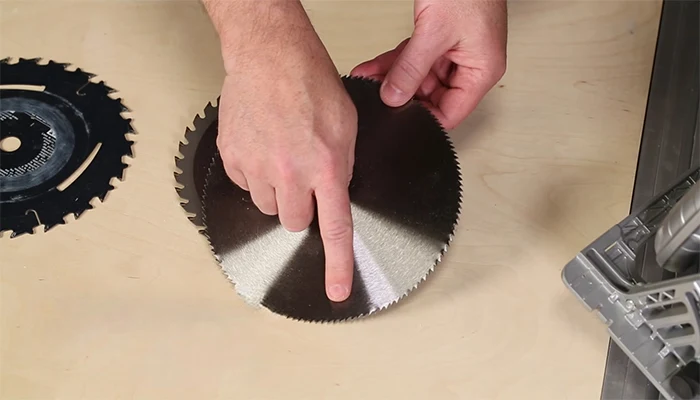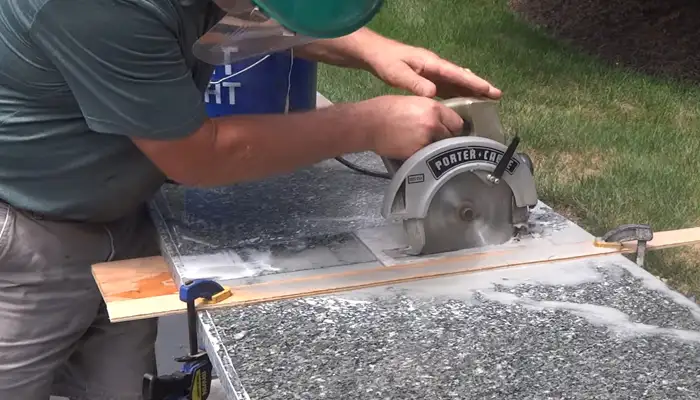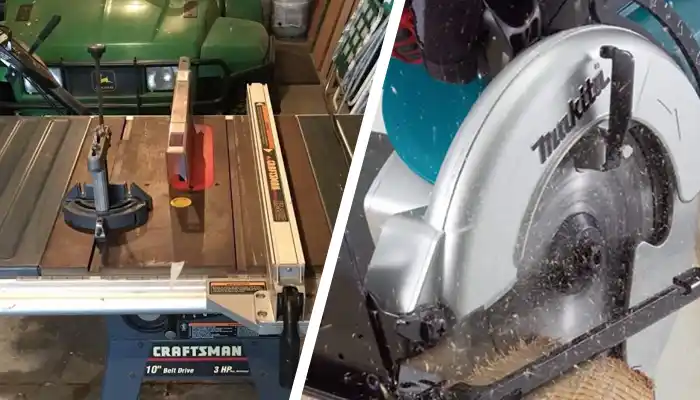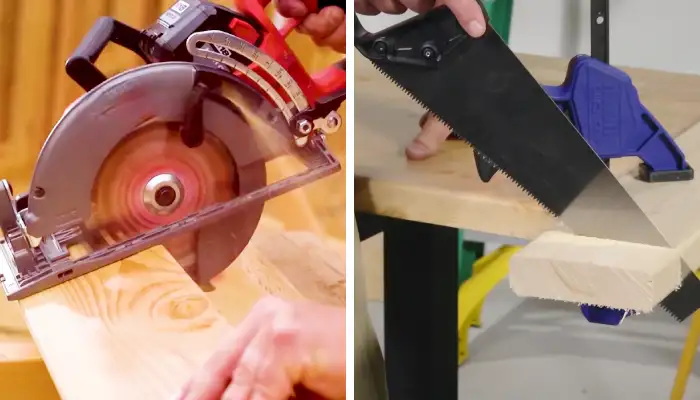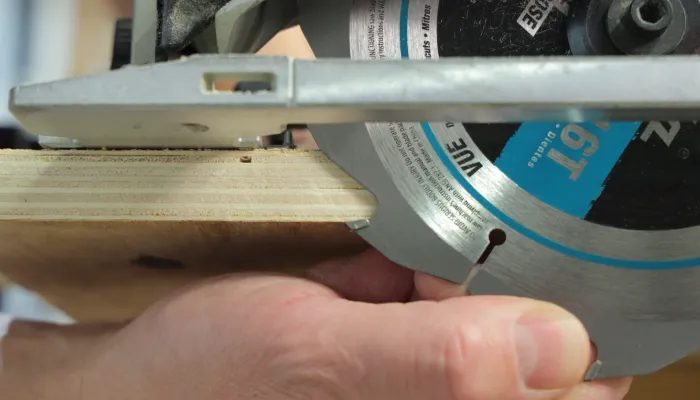Are More Teeth on a Circular Saw Blade Better: Behind the Reasons
Cutting wood can be made more efficient and precise with the right circular saw blade, whether you’re a professional or a DIY enthusiast. Among the key considerations in this decision-making process is the tooth count on the blade.
I know what you’re thinking: why do I need more teeth on a circular saw blade for woodworking? Well, let me tell you, it’s all about precision and smooth cuts.
When you have more teeth on your blade, each tooth takes a smaller bite, resulting in cleaner, splinter-free cuts. Whether working with hardwood or softwood, having more teeth means better control and a more professional finish.
Here, I’ll explain why tooth count matters and how it affects the performance of your saw blade. So, take advantage of extra teeth on your circular saw blade.
Why Are More Teeth on a Circular Saw Blade Better: 9 Reasons

Having more teeth on a circular saw blade offers several positive reasons in woodworking. Here, I listed 9 of them:
- Smoother finishes
- Reduced material waste
- Minimized chipping
- Versatility in material handling
- Enhanced cross cutting performance
- Reduced sanding requirements
- Quieter operation
- Lower power requirements
- Extended blade lifespan
No 01: Smoother Finishes
According to my findings, using a circular saw blade with more teeth results in a smoother finish on woodwork. The increased number of teeth allows for more contact points between the blade and the cut material. This means each tooth takes a smaller bite out of the wood, resulting in finer and more precise cuts.
With fewer teeth, the gaps between them can cause tear-out and splintering, leading to a rougher finish. However, with more teeth, the cutting action is distributed more evenly, minimizing the chances of these imperfections.
The additional teeth also help to reduce the amount of material being removed with each pass, allowing for greater control and accuracy.
No 02: Reduced Material Waste
I believe that more teeth on a circular saw blade allow for more efficient use of materials in woodworking. With more teeth, the saw blade produces narrower cuts, known as kerfs, resulting in less material waste during each cut.
This waste reduction is especially beneficial when working with expensive or limited resources, as it maximizes the yield from the raw material. By minimizing the amount of material removed, woodworkers can make the most out of each piece, saving both time and money.
Additionally, the reduced material waste contributes to a cleaner and neater work environment, as there’s less debris and sawdust generated.
No 03: Minimized Chipping
As a woodworker enthusiast, I’ve found that a higher tooth count on a circular saw blade reduces chipping during cutting. Chipping occurs when the outer layers of the material break or splinter, resulting in an uneven and unsightly cut.
By increasing the number of teeth on the blade, the cutting force is distributed more evenly across the material, minimizing the risk of chipping.
This is particularly important when working with materials like plywood or veneer, which are prone to chipping due to their layered structure. A circular saw blade with a higher tooth count ensures that each tooth takes a smaller bite, reducing the likelihood of chipping and resulting in a higher quality finish.
No 04: Versatility in Material Handling
When working with different materials, such as hardwood, softwood, plywood, or even certain metals, having more teeth on the blade allows for more precise and efficient cuts.
For example, when cutting hardwood, a higher tooth count helps to reduce splintering and chipping, resulting in a smoother finish. On the other hand, when cutting softwood, a higher tooth count helps to prevent tear-out and produce clean edges.
I believe this versatility in material handling makes a circular saw blade with more teeth a valuable tool in woodworking, as it allows you to handle different projects easily.
No 05: Enhanced Cross Cutting Performance
Circular saw blades with more teeth enhance the cross cutting performance. It will allow you to achieve smoother and more controlled cuts when working with different materials.
The increased number of teeth on the blade helps to distribute the cutting force more evenly, reducing the likelihood of splintering or tear-out on the workpiece. This is particularly important when working with delicate or expensive materials, where a clean and precise cut is crucial.
Additionally, the higher tooth count on the blade ensures that the teeth take a smaller bite out of the material, resulting in a finer and more refined cut. The finer cut also reduces the sanding or finishing required after the cut, saving time and effort.
No 06: Reduced Sanding Requirements
Using a circular saw blade with a higher tooth count reduces the need for extensive sanding in woodworking projects. The smoother cuts achieved with a higher tooth count often eliminate the need for extensive sanding or finishing work.
This not only saves time but also preserves the integrity of the material, as excessive sanding can sometimes compromise the final product.
When a circular saw blade has more teeth, it reduces the occurrence of splintering and tear-out, which are common issues when using blades with fewer teeth. The smoother cuts also mean fewer imperfections to address, reducing the need for extensive sanding or finishing.
No 07: Quieter Operation
I have found that circular saw blades with more teeth provide quieter operation during woodworking. Having more teeth on the blade allows for a smoother, more controlled cutting action, reducing vibrations and noise.
Each tooth makes contact with the material as the blade cuts through the wood, creating smaller and more manageable chips. This minimizes the amount of tearing or splintering that can occur, leading to a quieter cutting process.
Additionally, the increased number of teeth distributes the cutting force more evenly, reducing the strain on the motor and resulting in less noise.
No 08: Lower Power Requirements
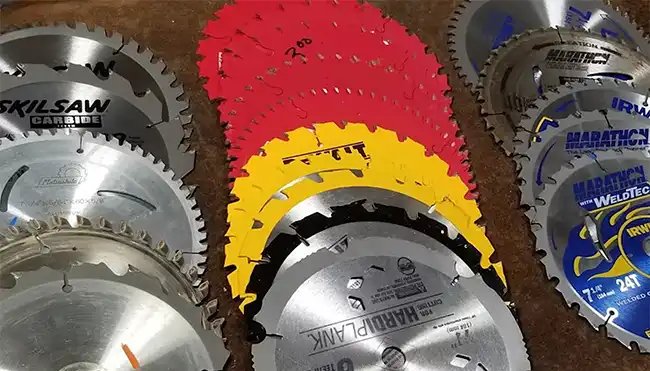
The increased number of teeth on a circular saw blade enhances its efficiency and reduces power consumption during woodworking. When a saw blade has more teeth, each tooth removes less material. This means less force is required to cut through the wood, resulting in lower power requirements.
If there were fewer teeth, each tooth would have to remove a larger amount of material, requiring more force and power.
Lower power requirements can be advantageous in several situations. For users with less powerful saws, having a saw blade with more teeth allows them to achieve cleaner and smoother cuts without straining the motor.
No 09: Extended Blade Lifespan
A circular saw blade with more teeth is more durable and long-lasting, providing woodworkers with greater reliability. This is because each tooth undergoes less wear when the blade has more teeth during each cut. As a result, the blade experiences less stress and maintains its sharpness for longer.
This extended lifespan saves woodworkers money by reducing the frequency of blade replacements and increases productivity by minimizing downtime for blade changes.
Additionally, a longer-lasting blade means less waste as it can continue to make clean and precise cuts without requiring frequent sharpening or replacement.
How many teeth do I need for my circular saw?
The number of teeth on a circular saw blade is crucial for determining the quality of the cut and the saw’s overall efficiency. I found that a 24-tooth general-use blade is sufficient for most construction work.
However, a higher tooth count is usually recommended for miter and circular saw blades for woodworking. A blade with more teeth will result in a smoother cut with less tear-out and a finer finish.
The ideal tooth count for woodworking will depend on the type of wood being cut and the desired outcome. For softer woods, a blade with 40 to 60 teeth is often suitable, while hardwoods may require a blade with 80 or more teeth.
What is a 60 tooth circular saw blade used for?
I believe a 60-tooth blade is specifically designed for crosscutting various materials such as oak, pine, melamine, veneer plywood, and delicate molding. This blade’s high tooth count ensures a remarkably clean and chip-free cut, reducing the need for extensive sanding afterward.
This makes the 60-tooth circular saw blade ideal for tasks that require precision and a high-quality finish, such as cutting pieces for furniture, cabinets, or other fine woodworking projects.
What is a 200 tooth saw blade used for?
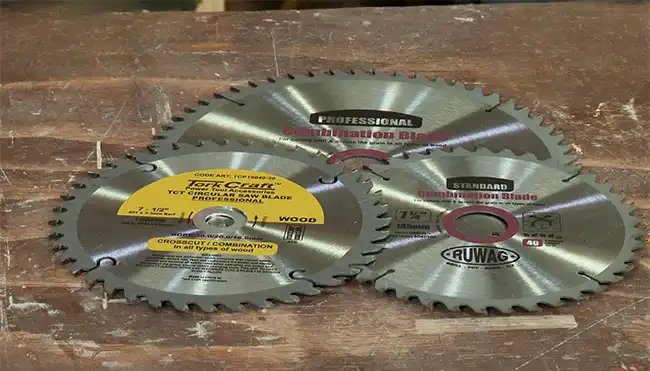
According to my findings, a 200-tooth saw blade is specifically designed to cut materials such as plywood, paneling, veneer, and plastics, making it ideal for projects requiring clean and smooth edges. The large number of teeth on the blade ensures that the cuts are precise and free from splintering or tearing.
The blade’s design and tooth configuration also reduce the chances of chipping or damaging delicate materials.
Unlock the Secrets to Smooth Woodworking Cuts
I think circular saw blades with more teeth provide smoother cuts and reduce the risk of splintering in woodworking. The number of teeth needed depends on the type of material being cut and the desired finish.
For example, a 60-tooth circular saw blade is ideal for cutting plywood and achieving a clean edge. On the other hand, a 200-tooth saw blade is commonly used for cutting fine hardwoods to achieve a polished finish.
Don’t forget the right blade can make all the difference in your woodworking projects.

